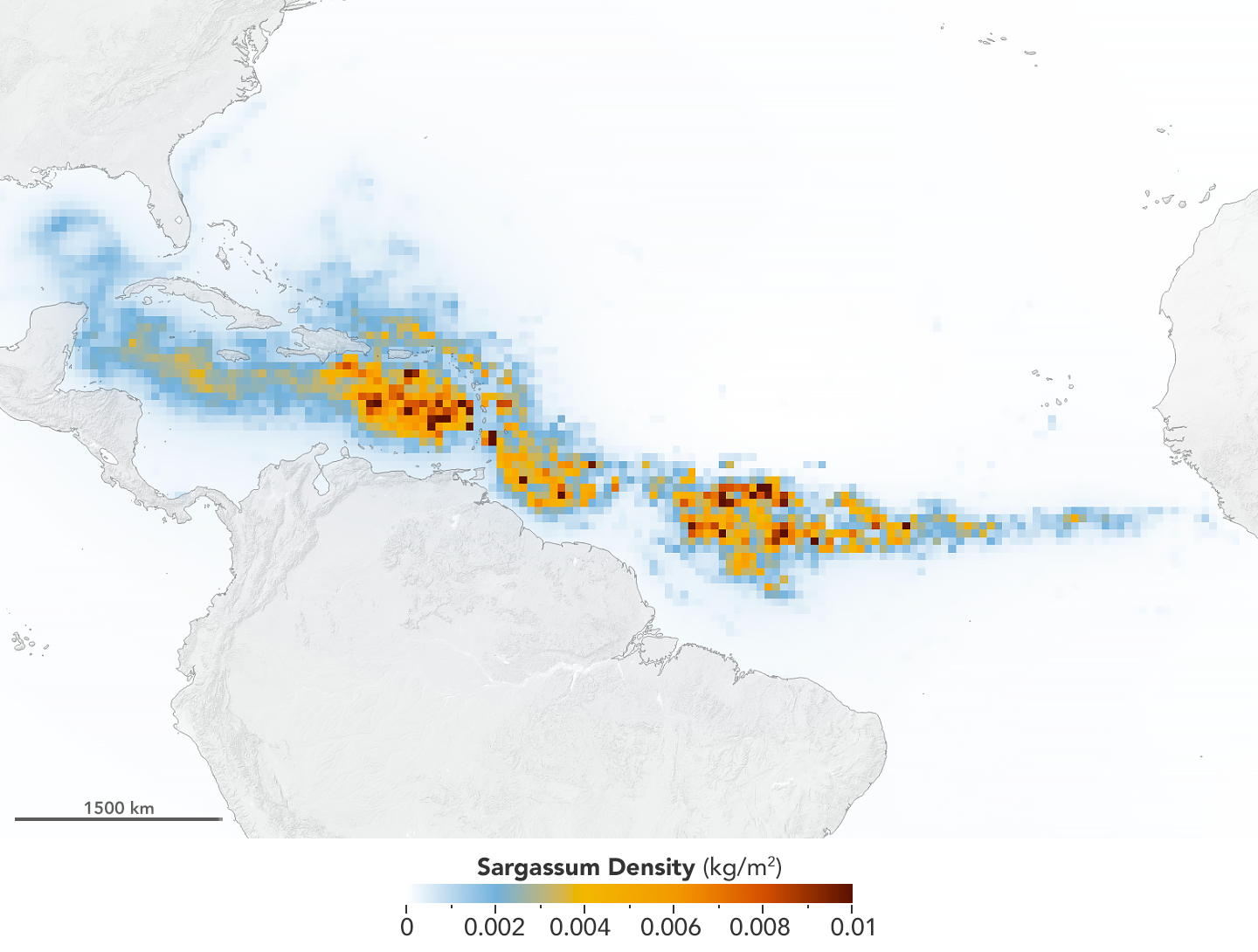Satellites in Space Spot Largest Seaweed Bloom on Earth
The brown algae stretch from West Africa to the Gulf of Mexico.

NASA's Earth observation satellites have spotted the largest seaweed bloom in the world, a belt of algae stretching 5,500 miles (8,850 kilometers) from West Africa to the Gulf of Mexico.
The brown algae, referred to as the Great Atlantic Sargassum Belt, have been floating on the surface of the tropical Atlantic Ocean for the past eight years. In 2018, more than 20 million tons of the algae were spread out along the shorelines of the tropical Atlantic Ocean, Caribbean Sea, Gulf of Mexico and east coast of Florida.
"The scale of these blooms is truly enormous, making global satellite imagery a good tool for detecting and tracking their dynamics through time," Woody Turner, manager of the Ecological Forecasting Program at NASA headquarters in Washington, said in a statement.
Related: Earth Day 2019: These Amazing NASA Images Show Earth from Above
Researchers from the College of Marine Science at the University of South Florida (USF) in St. Petersburg used satellite observations between the years 2000 to 2018 to study the seaweed bloom in hopes of figuring out what may be causing it.
The data gathered from an instrument called the Moderate Resolution Imaging Spectroradiometer (MODIS) aboard NASA's Terra and Aqua satellites indicated a shift in the year 2011, when it appeared in places it had not been before, suggesting that the bloom forms in response to changing ocean currents, according to the statement.
"The ocean’s chemistry must have changed in order for the blooms to get so out of hand," Chuanmin Hu, an oceanographer with the USF College of Marine Science and lead author of the study, said in the statement.
Get the Space.com Newsletter
Breaking space news, the latest updates on rocket launches, skywatching events and more!
Under normal circumstances, Sargassum contributes to a healthy marine life by providing habitat for fish, turtles, crabs and even birds. However, too much of this seaweed can have a smothering effect on these marine animals, according to the study.
"This is all ultimately related to climate change, as climate affects precipitation and ocean circulation and even human activities" that can lead to Sargassum blooms, Hu said. "They are probably here to stay."
The study was published in the journal Science on July 5.
- How NASA Satellites Are Helping Track Disease Outbreaks
- See Hurricane Michael from Space in These Satellite Images
- Delaware-Size Iceberg Stuck Near Home, Satellite Images Show
Follow Passant Rabie @passantrabie. Follow us on Twitter @Spacedotcom and on Facebook.
Join our Space Forums to keep talking space on the latest missions, night sky and more! And if you have a news tip, correction or comment, let us know at: community@space.com.

Passant Rabie is an award-winning journalist from Cairo, Egypt. Rabie moved to New York to pursue a master's degree in science journalism at New York University. She developed a strong passion for all things space, and guiding readers through the mysteries of the local universe. Rabie covers ongoing missions to distant planets and beyond, and breaks down recent discoveries in the world of astrophysics and the latest in ongoing space news. Prior to moving to New York, she spent years writing for independent media outlets across the Middle East and aims to produce accurate coverage of science stories within a regional context.









